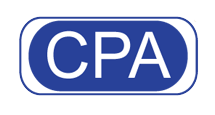05 Jan

There are times when a Company may enter into a convertible financing which could cause them to record a loss on their financials the day they enter into the transaction. This was a subject that was brought up recently by the Office of the Chief Accountant (“OCA”) Professional Accounting Fellows during the AICPA National Conference on Current SEC and PCAOB Developments, held December 8-10, 2014.
How could this happen? This could occur if a Company enters into a convertible financing which creates a derivative liability that needs to be recorded separately from the host debt instrument, at fair value. (See my blog post, dated September 18, 2014, for some examples of derivative instruments that may need to be recorded at fair value.) If the fair value of the derivative liability is greater than the proceeds the Company received in the financing, it would result in a day-one loss on their financial statements.
Why would a Company enter into a financing that would cause a day-one loss on their financials? During the AICPA meeting, the OCA Professional Accounting Fellows mentioned some reasons. For instance, a Company might enter into a financing because management thought it would be helpful for them to align with a particular investor. Or, perhaps the Company is in financial distress and they need to have the financing to remain a going-concern. The OCA Professional Accounting Fellows did caution that if it looks like a transaction might result in a day-one loss, that the registrant should perform the following steps:
- First, verify the fair value of the derivative liabilities recorded at fair value are appropriate under FASB Accounting Standards Codification (“ASC”) 820, Fair Value Measurement.
- If so, then evaluate whether it was an arm’s length transaction. (Consider whether the parties involved were related parties under ASC 850, Related Party Disclosures.)
- If it was an arm’s length transaction with an unrelated party, determine if there were any other rights or privileges received that meet the definition of an asset under other accounting guidance.
If the financing was an arm’s length transaction between unrelated parties and there were no other rights or privileges that meet the definition of an asset under other guidance, then the SEC staff said they believe it is appropriate to measure the derivative liability at fair value and the excess of the fair value, over the net proceeds received in the transaction, would be recognized as a loss in earnings.
Transcripts from the AICPA National Conference on Current SEC and PCAOB Developments can be found in the Speeches section of www.sec.gov.



